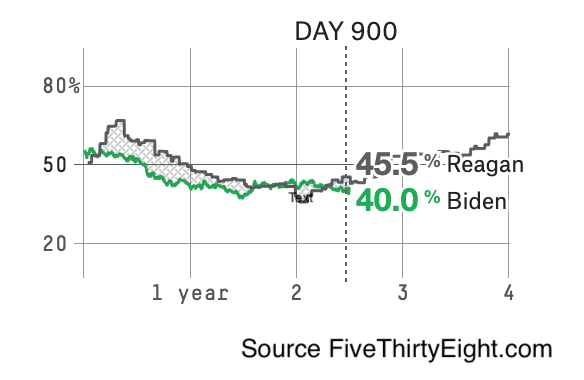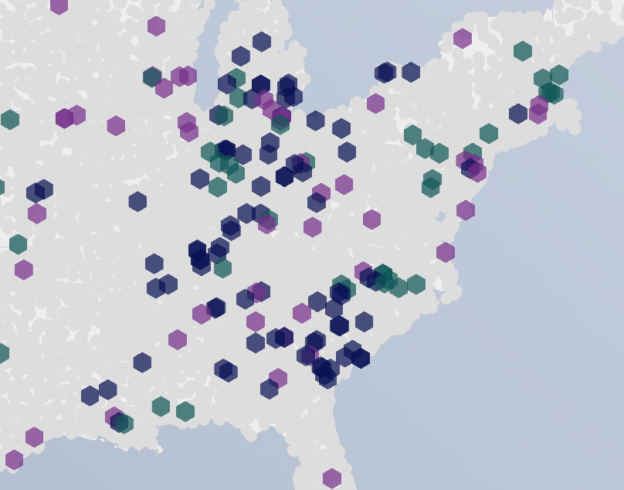According to the 2020 American National Election Study, 63% of people under 30 thought that the government should be doing “more things,” versus just 37% who thought it should “do less.” Yet few young Americans even consider working in the civil service.
At Harvard’s Kennedy School of Government, where “Ask what you can do for your country” is engraved on the wall, 44% of the graduating class of 2022 took jobs in the private sector, 22% for nonprofits, and 28% for any government. From my beloved Tufts University, where students tend to be very idealistic, 6% of the undergraduate class of 2022 will work for “Government, Law, Public Policy, [or a] Think Tank.” I suspect public sector employment represents a small proportion of that 6%.
The role of the federal government expanded substantially in 2021-2 with the passage of the $1.9 trillion American Rescue Plan, the $739 billion Inflation Reduction Act, and the $280+ billion CHIPS Act. Yet young people have not heard a call to go to Washington to make these new programs work.
Some colleges and universities produce large numbers of public employees, especially teachers and law enforcement personnel. I am grateful to them and believe that a degree of class bias explains why such jobs are less popular at institutions like Tufts and Harvard. Still, the civil service is a different category than regular public sector employment. At several points in our history, government service has attracted people who have advantages and cultural capital. Not so today.
Some reasons are on the demand side. The Partnership for Public Service says that the federal “hiring process is long and complicated,” the “pay system is antiquated,” and “opportunities for young people are hidden and scarce.” The Partnership and others–including some civil servants–are working on those problems. It’s easy for me to criticize without helping with the solutions. But these challenges need attention.
The supply side is also important (and more related to my work). Recent college graduates are not just avoiding public sector careers because of clunky hiring processes and antiquated pay grades. Many of them are against it.
From one direction, there are lots of left-wing students who might (or might not) vote for Bernie Sanders and his promise to expand government, yet who deeply distrust the national government of the USA. For them, the word “state” often comes with adjectives like “carceral,” “neoliberal” or “colonial.” Why work for that kind of organization?
From the opposite direction, I think many people have absorbed the lessons of public choice theory, which is presumptively skeptical about government.
Antony Downs offers a classic statement (Downs 1957). He writes that no economist would “advise monopoly corporations to increase social welfare by cutting prices.” We assume that a corporation is self-serving, and we consider changing its incentives by boosting competition or regulating it. Nevertheless, Downs says, people routinely call on government to maximize the public good without considering the motives of the people who actually operate the government (p. 283). This is naive.
Downs acknowledges that some individuals act altruistically, but he makes the simplifying assumption that people generally direct their own behavior “toward selfish ends” (p. 27). That premise leads him to the following assumptions about government: politicians and parties try to gain and retain office, bureaucrats strive to expand their budgets and personnel allotments, and citizens collect political information and vote only insofar as that will benefit them personally. “They treat policies purely as means to the attainment of private ends” (p. 28).
There is then little point in advising a government to do better. The only strategies that can work are to alter the incentives of public employees or to reduce the size of the state.
Downs assumes bounded rationality and limited cognitive capacity, but he emphasizes people’s selfishness. In An Economic Theory of Democracy, he never cites his contemporary, Friedrich Hayek, for whom cognitive limitations were more important than bad motivations. For Hayek, the main problem with government is that it cannot know how to allocate resources, because understanding a whole society is just too hard. In contrast, markets generate reliable signals in the form of prices.
My view is that both left-wing anti-institutionalism and public choice theory offer genuine insights. They both conflict with social democratic theories, which are similar to the ideals of the New Deal and Great Society and Biden’s “Build Back Better” agenda.
In that case, one might ask which theory is right, but that’s not how I would proceed. I acknowledge that there are truly bad ideologies–based on immoral premises–that are very unlikely to yield beneficial results. Leaving those ideologies aside, I see grand social theories less as hypotheses that can be proven true or false (or right or wrong) than as forces that motivate and orient people.
A social democratic ideal can draw people to work for (or alongside) a national government and to build excellent public programs. A critique of government can inspire people to build private-sector alternatives that also do good. Although it’s worth thinking critically about these contrasting assumptions and predictions, much more depends on who responds to each ideal and what they do together.
The example I give in What Should We Do? (2022) is public schooling. Movements for universal public education arose in countries like Prussia and the USA during the 1800s. It was never true–nor was it false–that mandatory, public funded schools are good for children or a society. Some are good, some are not. The public education movement, however, had inspiring ideals, and it launched the professions of teaching, educational research, educational administration, and teacher education.
Since then, people in those professions and their allies have tried to make public schools work. At times–being human–they have failed or have even failed to try. Reform movements have arisen that offer various prescriptions, such as progressive pedagogy, choice and competition, or measurement and accountability. Again, I doubt that any of these prescriptions is right or wrong, but each has created a new field of practice and new organizations that have done some degree of good (and harm).
By the same token, the competence, fairness, and responsiveness of government are variables, not constants. Some bureaucracies behave worse than in Downs’ model, because he explicitly assumes (p. 30) that officials will follow laws, which is often not the case. But some public agencies perform much better than he would anticipate, because they attract talent and develop impressive professional cultures. Downs’ assumption of selfishness is a priori, not empirical. Real people go into public service for a variety of complex reasons, some quite impressive. (By the way, if they were strictly motivated by economic self-interest, they wouldn’t serve at all.)
Allocating enough money matters, and the Biden spending bills are helping with that. But as long as Congress is a poor deliberative body, and as long as federal agencies are sclerotic and distant, the money will not be spent very well. Cash alone will not maximize social or environmental outcomes, and it definitely will not raise public support for government. Nothing alienates more than an unresponsive bureaucracy, even it sends you a check.
What we need now is a large, energetic, youthful, and diverse movement that wants to transform government to be more effective, wise, and responsive. That movement would not negate the insights of leftwing anti-institutionalism or of public choice theory, but it would treat those ideas as diagnoses and would look for cures.
Source: Downs, Anthony, An Economic Theory of Democracy (Addison Wesley 1957). See also the Green New Deal and civic renewal; using federal spending to strengthen democracy; putting the civic back in civil service; on the Deep State, the administrative state, and the civil service.




